Abstract
Trimethylsilyl (TMS) derivatives prepared from whole-cell hydrolysates of 36 strains, representing 10 species of Clostridium were examined by gas-liquid chromatography (GLC). The TMS profile of each species contained a group of peaks which characterized the species. Variation among strains within a species was much lower than variation between species. Some of the closely related clostridia could be differentiated by comparing their TMS profiles. Strains of Clostridium botulinum were distinguished from C. sporogenes on the basis of the ratio of two GLC peaks which corresponded to arabinose and glucose. A peak with a retention time identical to that of mannose was present in all C. bifermentans strains but was absent in those of C. sordellii.
Full text
PDF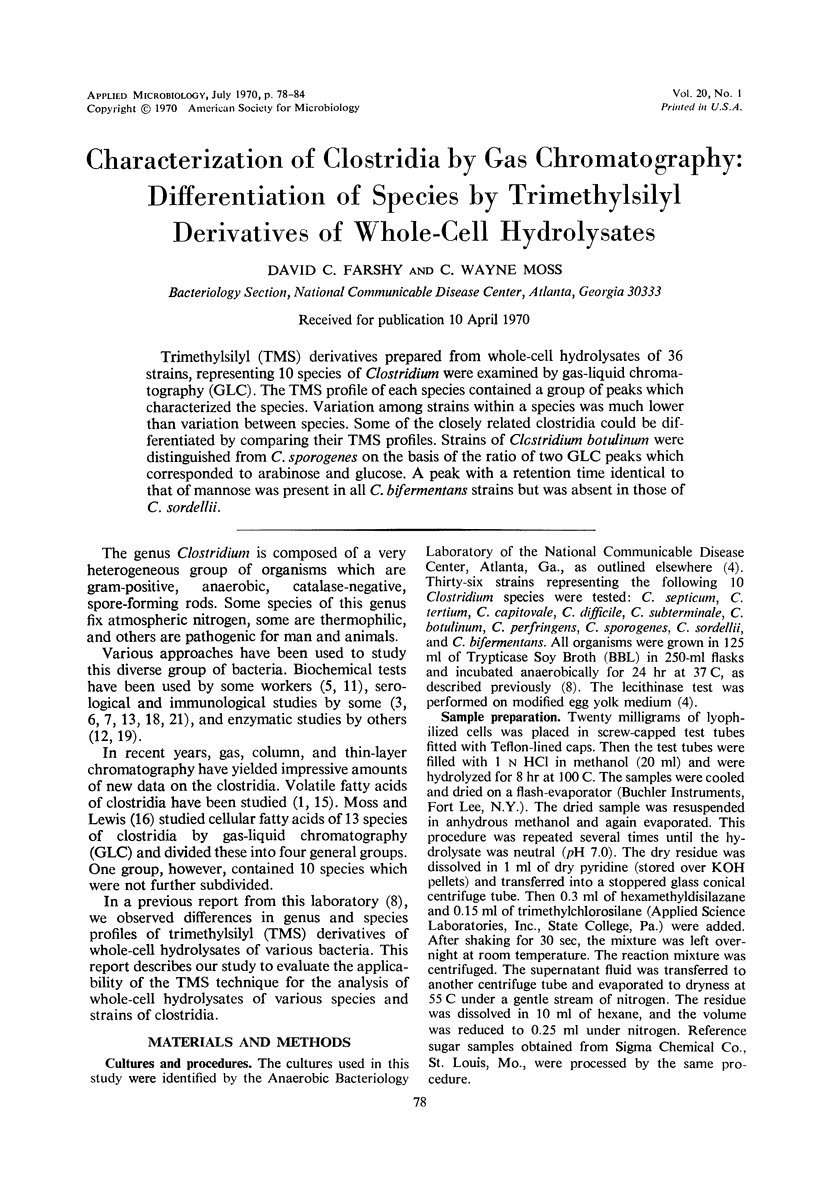
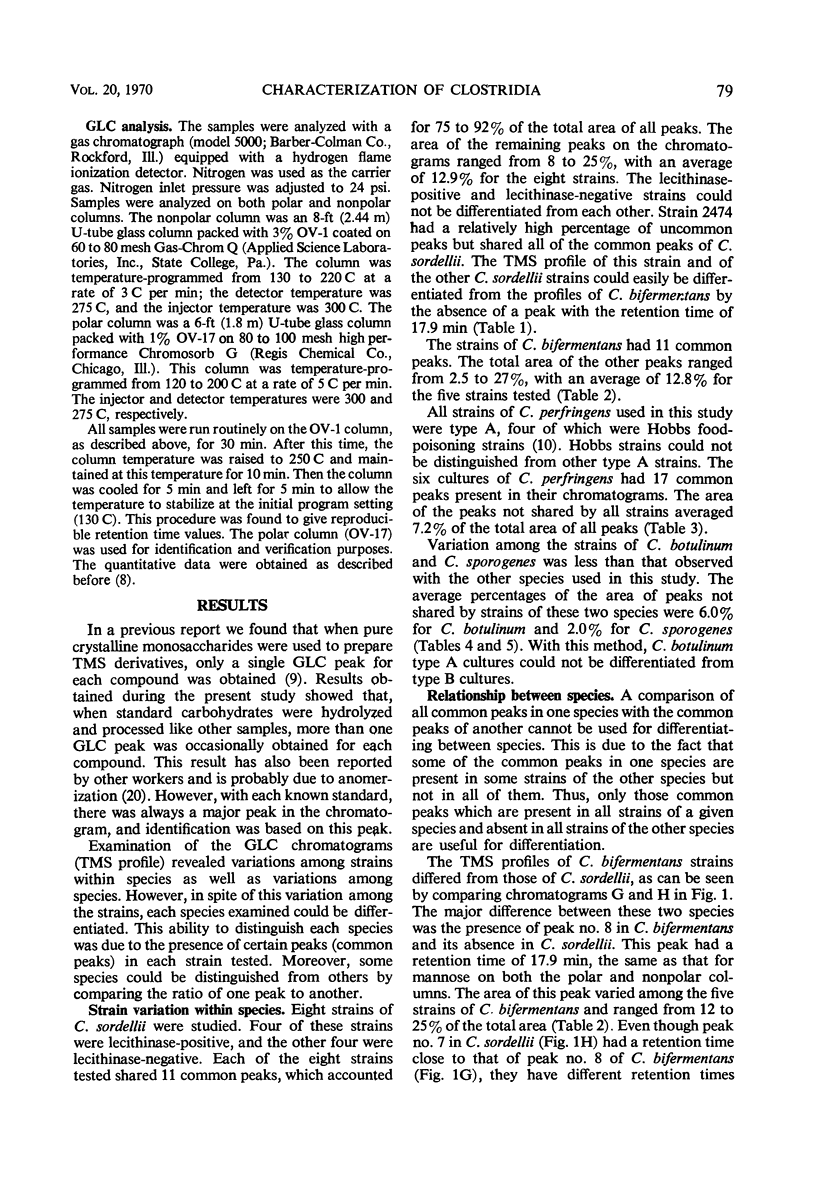
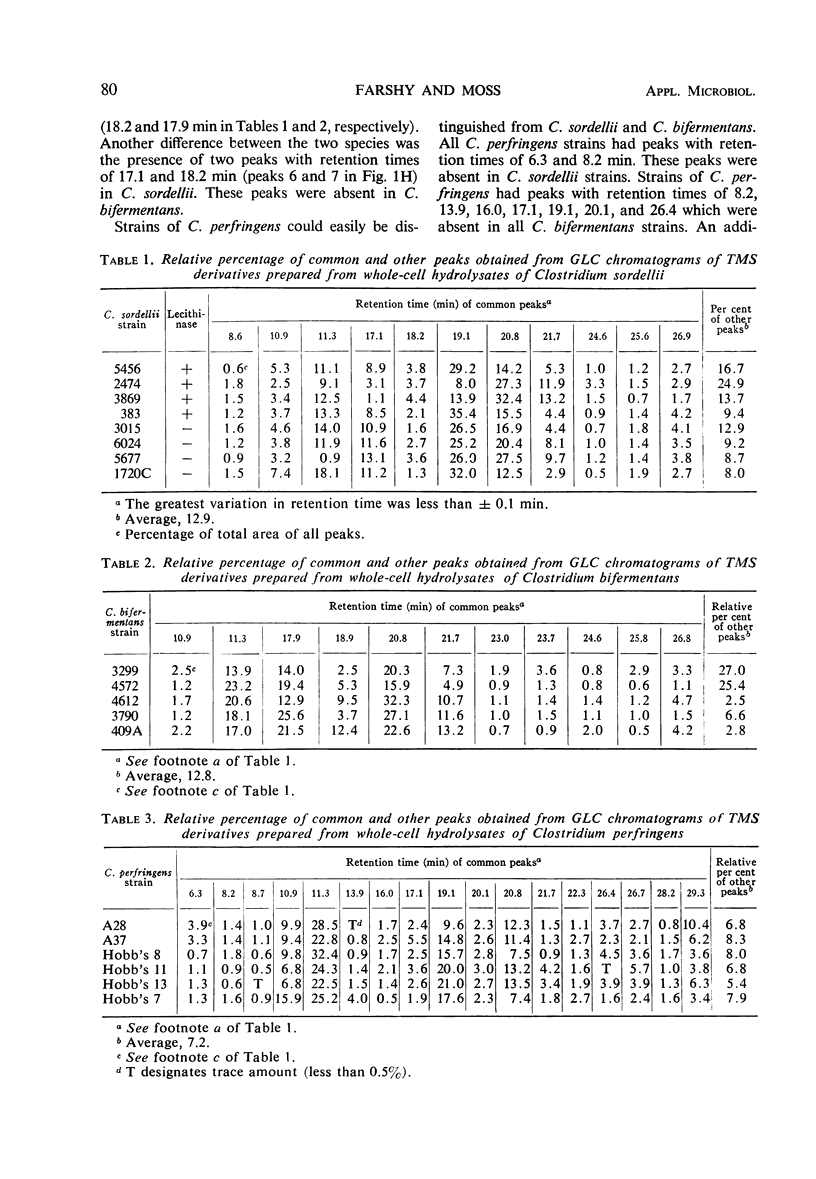
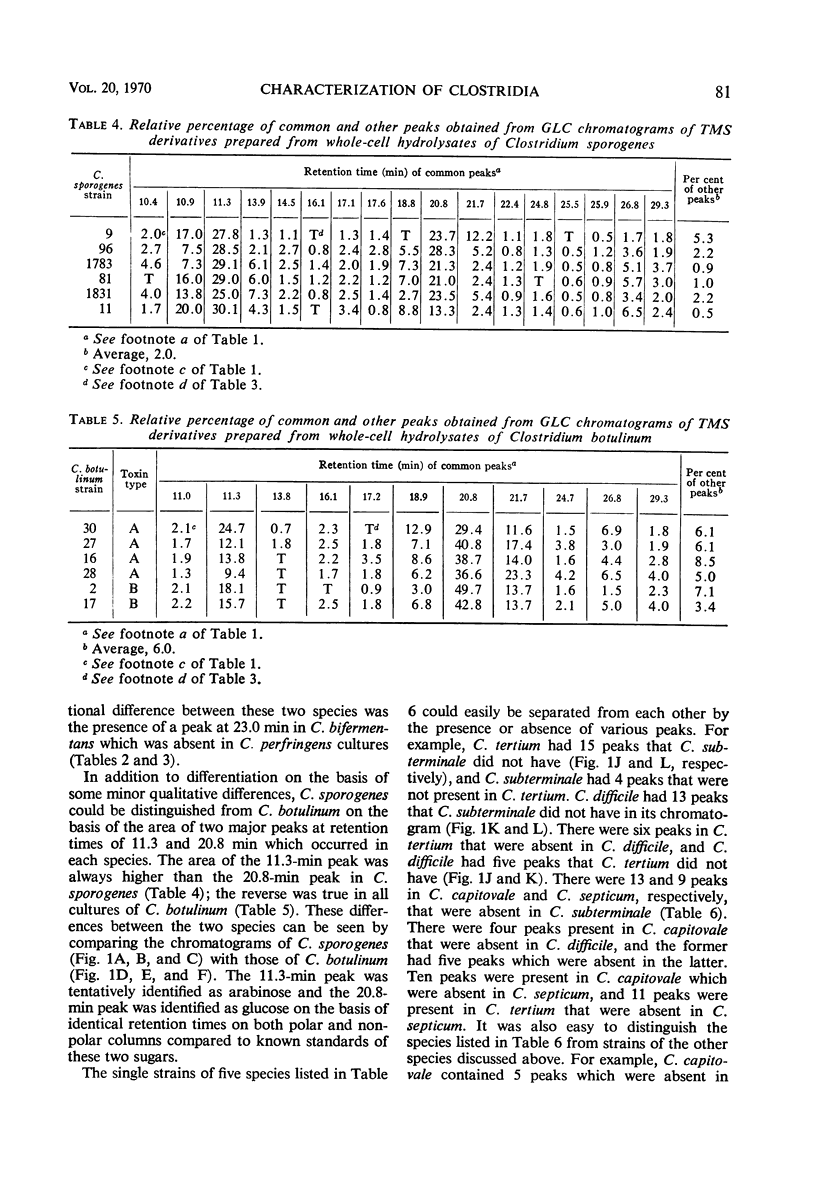
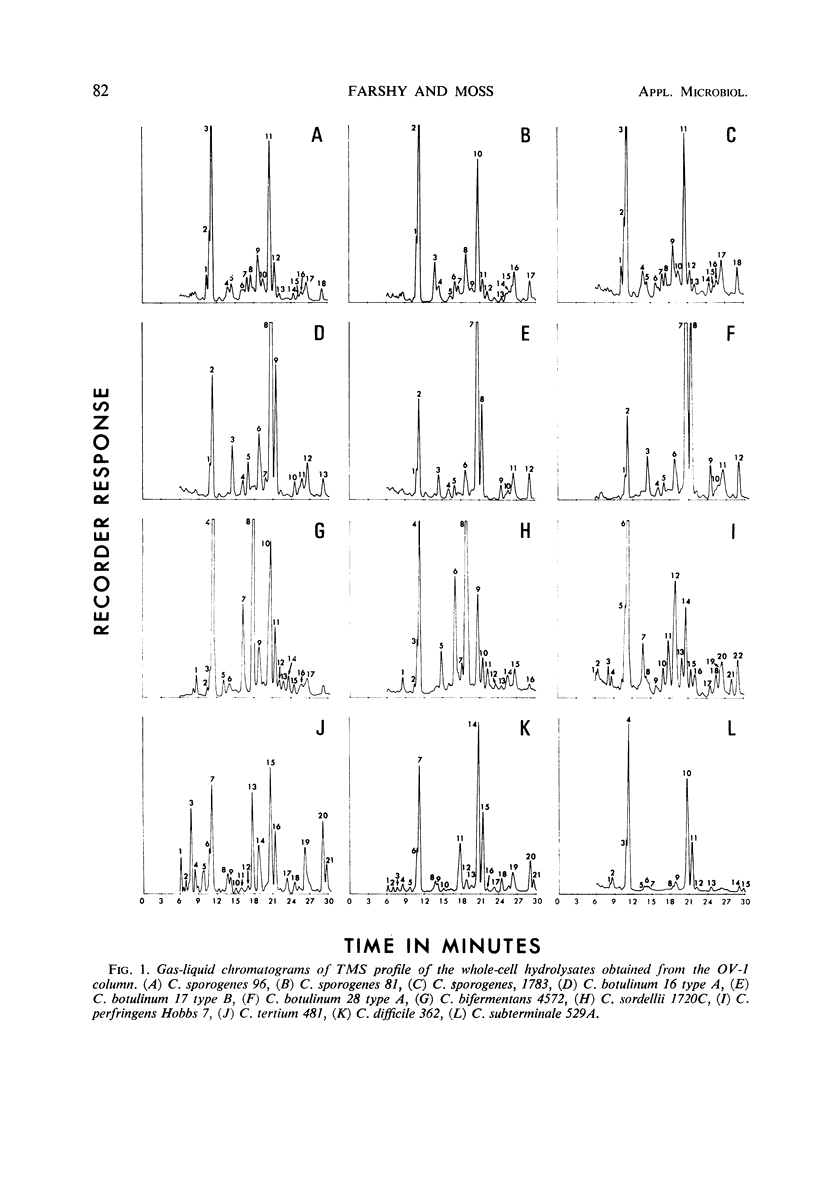
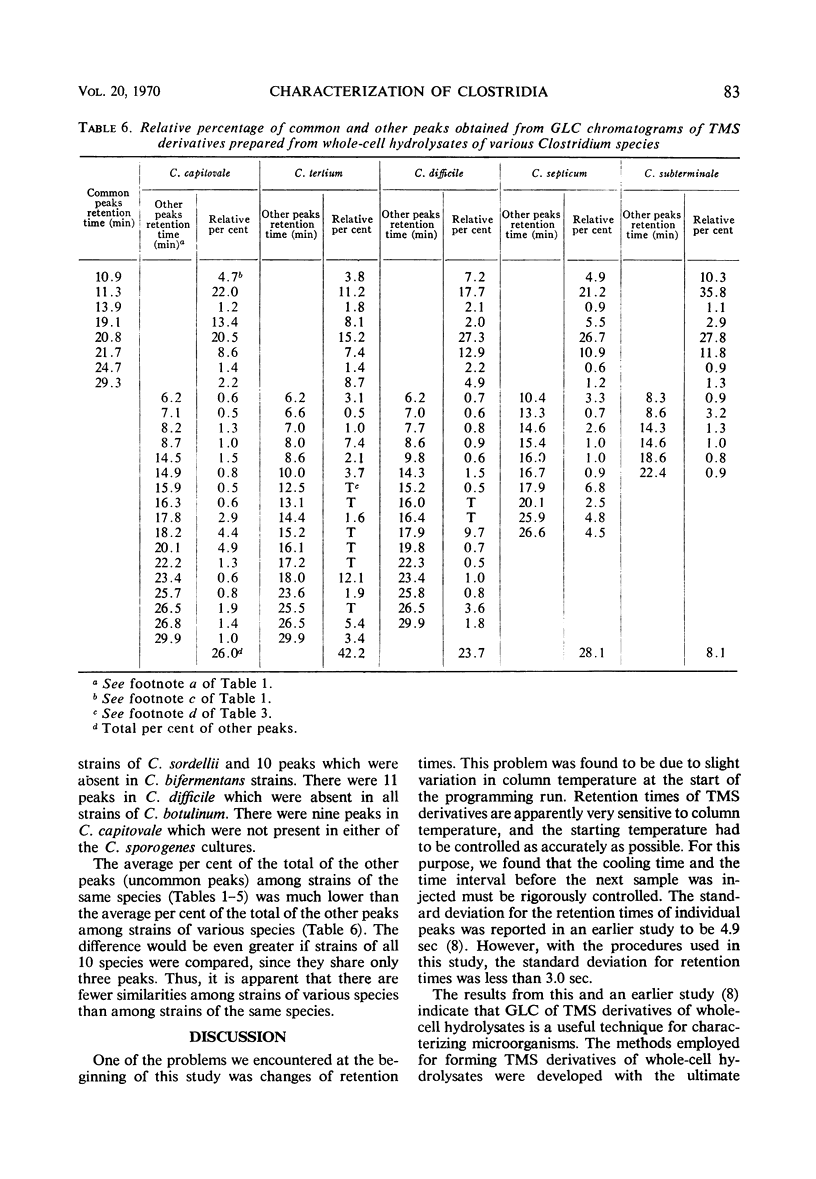
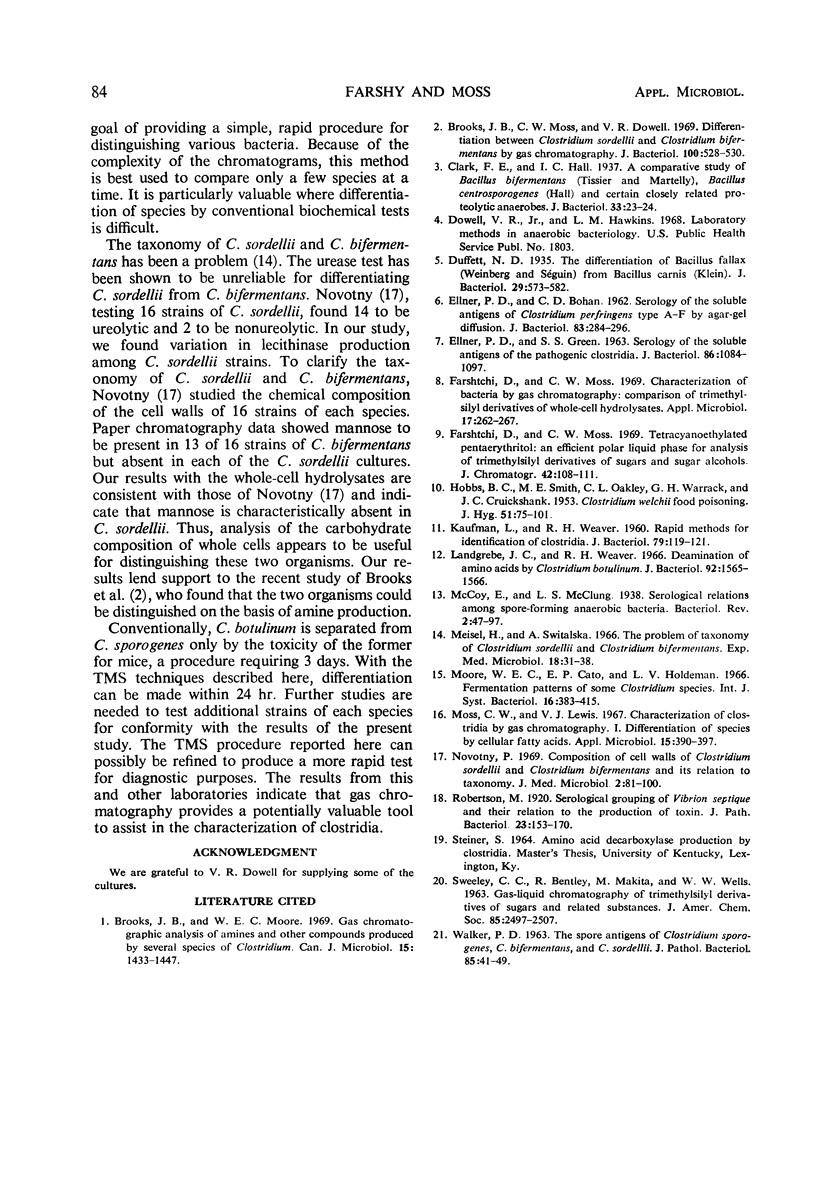
Selected References
These references are in PubMed. This may not be the complete list of references from this article.
- Brooks J. B., Moore W. E. Gas chromatographic analysis of amines and other compounds produced by several species of Clostridium. Can J Microbiol. 1969 Dec;15(12):1433–1447. doi: 10.1139/m69-257. [DOI] [PubMed] [Google Scholar]
- Brooks J. B., Moss C. W., Dowell V. R. Differentiation between Clostridium sordellii and Clostridi- um bifermentans by gas chromatography. J Bacteriol. 1969 Oct;100(1):528–530. doi: 10.1128/jb.100.1.528-530.1969. [DOI] [PMC free article] [PubMed] [Google Scholar]
- Duffett N. D. The Differentiation of Bacillus fallax (Weinberg and Séguin) from Bacillus carnis (Klein). J Bacteriol. 1935 Jun;29(6):573–581. doi: 10.1128/jb.29.6.573-581.1935. [DOI] [PMC free article] [PubMed] [Google Scholar]
- ELLNER P. D., BOHAN C. D. Serology of the soluble antigens of Clostridium perfringens types A-F by agar-gel diffusion. J Bacteriol. 1962 Feb;83:284–296. doi: 10.1128/jb.83.2.284-296.1962. [DOI] [PMC free article] [PubMed] [Google Scholar]
- ELLNER P. D., GREEN S. S. SEROLOGY OF THE SOLUBLE ANTIGENS OF THE PATHOGENIC CLOSTRIDIA. J Bacteriol. 1963 Nov;86:1084–1097. doi: 10.1128/jb.86.5.1084-1097.1963. [DOI] [PMC free article] [PubMed] [Google Scholar]
- Farshtchi D., Moss C. W. Characterization of bacteria by gas chromatography: comparison of trimethylsilyl derivatives of whole-cell hydrolysates. Appl Microbiol. 1969 Feb;17(2):262–267. doi: 10.1128/am.17.2.262-267.1969. [DOI] [PMC free article] [PubMed] [Google Scholar]
- Farshtchi D., Moss C. W. Tetracyanoethylated pentaerythritol: an efficient polar liquid phase for analysis of trimethylsilyl derivatives of sugars and sugar alcohols. J Chromatogr. 1969 Jun 3;42(1):108–111. doi: 10.1016/s0021-9673(01)80594-x. [DOI] [PubMed] [Google Scholar]
- HOBBS B. C., SMITH M. E., OAKLEY C. L., WARRACK G. H., CRUICKSHANK J. C. Clostridium welchii food poisoning. J Hyg (Lond) 1953 Mar;51(1):75–101. doi: 10.1017/s0022172400015515. [DOI] [PMC free article] [PubMed] [Google Scholar]
- KAUFMAN L., WEAVER R. H. Rapid methods for the identification of clostridia. J Bacteriol. 1960 Jan;79:119–121. doi: 10.1128/jb.79.1.119-121.1960. [DOI] [PMC free article] [PubMed] [Google Scholar]
- Landgrebe J. C., Weaver R. H. Deamination of amino acids by Clostridium botulinum. J Bacteriol. 1966 Nov;92(5):1565–1566. doi: 10.1128/jb.92.5.1565-1566.1966. [DOI] [PMC free article] [PubMed] [Google Scholar]
- McCoy E., McClung L. S. SEROLOGICAL RELATIONS AMONG SPORE-FORMING ANAEROBIC BACTERIA. Bacteriol Rev. 1938 Jun;2(1):47–97. doi: 10.1128/br.2.1.47-97.1938. [DOI] [PMC free article] [PubMed] [Google Scholar]
- Meisel H., Switalska A. Zagadnienie taksonomii Clostridium sordellii i Clostridium bifermentans. I. Właściwości komórek wegetatywnych. Med Dosw Mikrobiol. 1966;18(1):31–38. [PubMed] [Google Scholar]
- Moss C. W., Lewis V. J. Characterization of clostridia by gas chromatography. I. Differentiation of species by cellular fatty acids. Appl Microbiol. 1967 Mar;15(2):390–397. doi: 10.1128/am.15.2.390-397.1967. [DOI] [PMC free article] [PubMed] [Google Scholar]
- Novotny P. Composition of cell walls of Clostridium sordelli and Clostridium bifermentans and its relation to taxonomy. J Med Microbiol. 1969 May;2(2):81–100. doi: 10.1099/00222615-2-2-81. [DOI] [PubMed] [Google Scholar]
- WALKER P. D. The spore antigens of Clostridium sporogenes, Cl. bifermentans and Cl. sordellii. J Pathol Bacteriol. 1963 Jan;85:41–49. doi: 10.1002/path.1700850105. [DOI] [PubMed] [Google Scholar]


